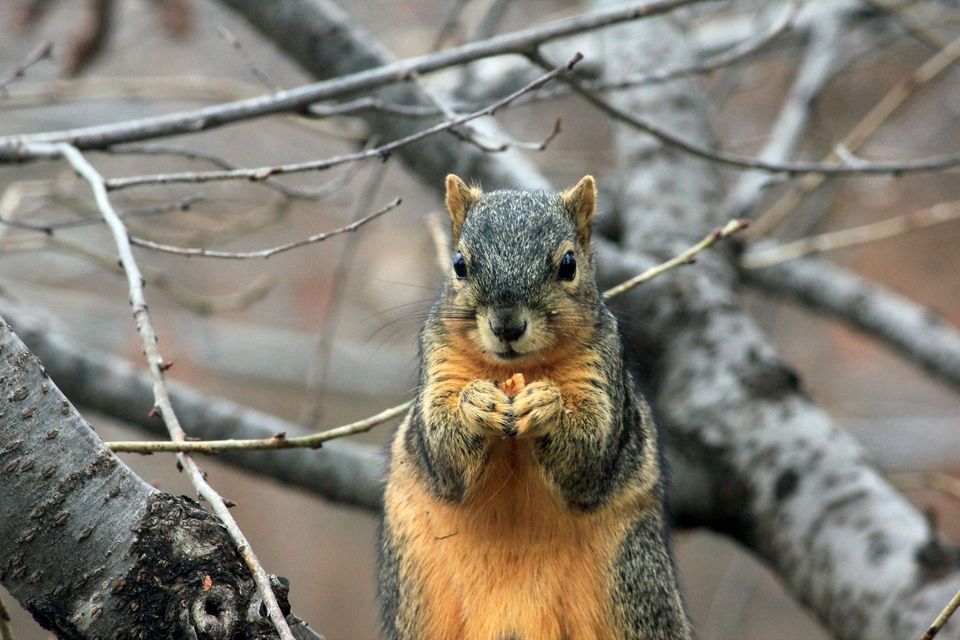Why Are Squirrels So Busy in the Fall?
Encroaching winter means squirrels having a higher impact on your home
Many folks, especially those who live up north, are used to seeing squirrels busy-bodying around parks, yards, and other greenspaces when colder weather rolls around each year. From hurrying up trees and light poles, to quickly digging in loose dirt to bury their bounty, squirrels spend the final months of the year both packing in and spending energy readily. So what are they up to and what does it mean to your efforts to keep squirrels away from your home?
During the early fall, female squirrels are rearing their second litter of babies. While this keeps them in the den with their young for more of the day, their time spent outside the nest is necessary in order to properly re-energize. That results in a need to locate and consume a lot of food quickly.
>>
Try Shake-Away All Natural Squirrel Repellent to Keep Squirrels Away
<<
As fall progresses, squirrels begin preparing for both the cold winter and their spring awakening. There are lots of things on the checklist for a winter-prepping squirrel, the most pressing being making sure that there is food stored that will sustain the squirrel through the barren winter months. Fall time is when trees begin releasing acorns, giving squirrels an excess of their preferred food on which to feast and to stockpile. For ground squirrels, this means getting to bury enough food to sustain themselves after a winter hibernation. Tree squirrels however don’t hibernate, so they are spending their time both consuming their food and burying a portion for the spring thaw.
All of this foraging leads to a lot of digging. Most squirrels choose loose materials such as mulch, pine needle beds, and silt in which to bury their stashes, but it isn’t uncommon to see a squirrel patching together a nest of tall grass in order to store their spoils. Certain species will also store their acorns in notches in trees. In more residential areas, squirrels often end up in the attics of homes while finding shelter from the cooler weather. The warmth of the home and ease-of-access from the trees and powerlines that squirrels already traverse make attics a prime storage and shelter location for the busy-bodied squirrel.
The autumn is also the last portion of the year where squirrels are active during nearly all daylight hours. During the winter, tree squirrels spend only about 4 hours a day out of their nest and active in the world below. The shortening in daylight hours during the fall triggers squirrels to take advantage of what hours remain each day, making those shortening hours especially frantic for the preparing squirrels.
>> Try Shake-Away All Natural Squirrel Repellent to Keep Squirrels Away <<
The autumn comes with increased animal activity across most local fauna. This is especially true of animals in the rodent family, and most obviously of squirrels. During this time of foraging and caching for the squirrels, your home and yard may become prime territory for either storing their food or acting as a shelter for the squirrels themselves.
This time of year should prompt an extra effort to prepare your home to keep the squirrels out. From ensuring that your siding is undamaged and resistant to the gnawing of squirrels, to repelling the rodents from approaching your home in the first place, safeguarding your home from potential damage is especially important during the fall months.
Critter Repellent All Natural Animal Repellent Blog













